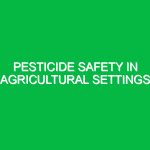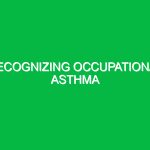Occupational diseases and conditions represent a critical aspect of health, safety, and environmental (HSE) management. These ailments arise as a direct result of workplace exposures and conditions, posing significant risks to the workforce’s well-being. Understanding their nature, causes, and preventive measures is essential for both employers and employees. This article delves into the world of occupational diseases and conditions, exploring their implications and the strategies necessary for effective prevention and management.
Defining Occupational Diseases and Conditions
Occupational diseases are defined as illnesses or medical conditions that result from the work environment or the nature of the work performed. These can include a range of health issues, from respiratory diseases due to inhaling hazardous substances to musculoskeletal disorders stemming from repetitive motions. Conditions can also manifest from psychological stressors, such as workplace harassment or excessive workloads.
The relevance of understanding these diseases in the HSE domain cannot be overstated. As industries evolve and new technologies emerge, the potential for exposure to harmful substances and stressful conditions grows. This evolution requires a proactive approach to health and safety management, ensuring that both employers and employees are informed and prepared.
Potential Hazards and Risks Associated with Occupational Diseases
Occupational diseases and conditions can arise from various hazards, which can be categorized into several types:
Chemical Hazards
Exposure to harmful chemicals is a leading cause of occupational diseases. Workers in industries such as manufacturing, agriculture, and construction may encounter substances like solvents, heavy metals, and pesticides. Chronic exposure can lead to conditions such as chemical pneumonitis or even cancers. For instance, a factory worker who regularly handles solvents without adequate ventilation may develop respiratory issues over time.
Physical Hazards
Physical hazards include noise, vibration, radiation, and extreme temperatures. For example, workers in construction or manufacturing may experience hearing loss due to prolonged exposure to loud machinery. Similarly, those working in extreme heat or cold can suffer from heat exhaustion or hypothermia. These conditions illustrate the importance of implementing effective noise control measures and temperature regulation in the workplace.
Ergonomic Hazards
Ergonomic hazards stem from poor workplace design, leading to musculoskeletal disorders (MSDs). These disorders can result from repetitive motions, awkward postures, or lifting heavy objects. A common example is an office worker experiencing chronic back pain due to improper desk height. Ergonomic assessments can play a significant role in preventing these conditions.
Biological Hazards
Biological hazards include exposure to bacteria, viruses, fungi, and other microorganisms. Healthcare workers, laboratory personnel, and those in agriculture are at higher risk. For instance, nurses may be exposed to infectious diseases without proper personal protective equipment (PPE), increasing the likelihood of contracting conditions such as hepatitis or tuberculosis.
Psychosocial Hazards
Psycho-social hazards encompass stress, harassment, and workplace violence. These issues can lead to mental health conditions such as anxiety and depression. An example can be drawn from the tech industry, where high-pressure environments can lead to burnout. Recognizing and addressing these hazards is crucial for a healthy workplace.
Safety Precautions and Best Practices
Preventing occupational diseases requires a multi-faceted approach that combines education, policy, and practice. Here are some actionable safety precautions and best practices that organizations can implement:
Risk Assessment
Conducting regular risk assessments is fundamental. This involves identifying potential hazards, evaluating the risks associated with them, and implementing control measures. For example, a construction site should routinely assess for both physical and chemical hazards, ensuring that all workers are aware of the risks and the protocols in place to mitigate them.
Personal Protective Equipment (PPE)
Providing appropriate PPE is essential in safeguarding employees from various hazards. This includes gloves, masks, goggles, and hearing protection. Training employees on the correct usage and maintenance of PPE is equally important. For instance, a laboratory technician must be trained not only to wear gloves but also to understand their limitations and the importance of changing them regularly.
Ergonomics Training
Implementing ergonomics training programs can significantly reduce the incidence of MSDs. Training should focus on proper lifting techniques, workstation adjustments, and the importance of taking breaks. Companies that invest in ergonomics often report lower injury rates and increased productivity.
Health Surveillance
Regular health surveillance helps in early detection of occupational diseases. By monitoring the health of workers exposed to certain hazards, organizations can identify trends and intervene before conditions become severe. For example, workers exposed to lead should undergo regular blood tests to monitor lead levels, allowing for timely action if levels become dangerously high.
Creating a Supportive Work Environment
Addressing psychosocial hazards requires fostering a supportive work culture. This includes promoting open communication, providing resources for mental health support, and implementing policies against harassment. A supportive environment not only improves employee morale but also enhances overall productivity.
Regulations and Standards Governing Occupational Diseases
Several regulations and standards exist to govern occupational health and safety, ensuring that employers take the necessary precautions to protect their employees. Some key regulations include:
Occupational Safety and Health Administration (OSHA)
In the United States, OSHA sets and enforces standards to ensure safe and healthy working conditions. Employers are required to comply with these standards, which encompass various aspects of workplace safety, including exposure limits for hazardous substances and requirements for PPE.
National Institute for Occupational Safety and Health (NIOSH)
NIOSH conducts research and makes recommendations to prevent work-related illnesses and injuries. It provides guidelines and resources for various industries, focusing on hazard identification and control strategies.
International Labour Organization (ILO)
The ILO promotes labor standards worldwide, including those related to occupational health and safety. Its conventions and recommendations guide countries in developing national policies to protect workers.
Conclusion
Occupational diseases and conditions pose significant risks to the health and safety of workers across various industries. Understanding the potential hazards, implementing effective safety precautions, and adhering to regulations can greatly mitigate these risks. Organizations must prioritize the health of their employees by fostering a culture of safety, investing in training, and continually assessing workplace conditions. By doing so, they not only comply with legal requirements but also enhance productivity and create a more engaged workforce. In the long run, a commitment to occupational health and safety is not merely a regulatory obligation; it is a moral imperative that benefits individuals, organizations, and society as a whole.


